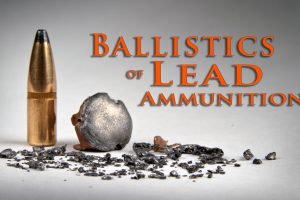
Upon impact, lead bullets lose up to 40% of their mass into tiny fragments that stray as far as 18″ from the wound channel. Hunters and scavenging wildlife consume lead fragments with negative health consequences.


Upon impact, lead bullets lose up to 40% of their mass into tiny fragments that stray as far as 18″ from the wound channel. Hunters and scavenging wildlife consume lead fragments with negative health consequences.